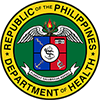Active Drug Safety Monitoring and Management (aDSM) Program
The Department of Health (DOH) Disease Prevention and Control Bureau – National Tuberculosis Control Program (DPCB-NTP) has been implementing the use of Standard Shorter Treatment Regimen (SSTR) which reduces the treatment duration for patients with multi-drug resistant tuberculosis (MDR-TB) from eighteen (18) months to nine (9) months. Moreover, the DPCB-NTP has already introduced the use of new anti-TB drugs and repurposed drugs for patients with drug-resistant (DR-TB) in the country. These interventions in TB management require active surveillance as part of pharmacovigilance for patients under MDR-TB and extensively Drug-Resistant TB (XDR-TB) treatment. In 2015, the Active Tuberculosis Drug-Safety Monitoring and Management (aDSM) Framework for Implementation of the World Health Organization (WHO) recommended immediate action for countries to adopt aDSM to complement the aforementioned interventions of the TB program. The implementation of aDSM is an integral component of the comprehensive package of TB services that will be provided to all patients with TB using a new anti-TB drug, repurposed drug, or a new regimen. This is aligned with the goal of the “Universal Health Care Act” to provide comprehensive quality and cost-effective health care services for all.
Since the Pharmaceutical Division (PD) is in charge of the monitoring of the utilization of the DOH public health program (PHP) medicines in the different health facilities, the office has included pharmacovigilance of PHPs in its operations, including the implementation of the aDSM program. The DOH-hired public health pharmacists who will assist in collecting and consolidating reports of Serious Adverse Events (SAEs) and Adverse Event of Special Interests (AESIs) in areas with no internet connection and encode the data in to Pharmacovigilance Monitoring System (PViMS). PViMS is a web-based monitoring tool, which enables the implementation of active surveillance activities in low- and middle-income countries (LMICs) by addressing the entire data collection, data analysis, and reporting process. These reports will then be submitted by the DOH-PD to the Food and Drug Administration (FDA) for causality assessment and analysis of reports.
Frequently asked questions
aDSM is defined by the World Health Organization (WHO) as the active and systematic clinical and laboratory assessment of patients on treatment using new anti-tuberculosis (anti-TB) drugs, novel multi-drug resistant tuberculosis (MDR-TB) regimens or extensively drug-resistant (XDR-TB) regimens to detect, manage, and report suspected or confirmed drug toxicities.
- To improve patient care & safety in relation to medicines and all medical interventions.
- To improve public health & safety in relation to use of medicines.
- To reduce risk from drug-related harm in patients on DR-TB treatment.
- To promote understanding, clinical training, and effective communication to health professionals and the public.
aDSM applies to the following groups:
- TB patients treated with new medicines (e.g., Bedaquiline (BDQ) or Delamanid (DLM)), repurposed drugs, or new regimen;
- TB patients enrolled on treatment with novel regimens such as the shorter MDR-TB treatment regimen; and,
- All XDR-TB patients on second-line treatment.
The Administrative Order No. 2020-0025 dated 02 June 2020 provides the policy and guidelines on the implementation of the aDSM program.
The policy applies to all health facilities, both public and private, and health professionals providing treatment to all patients with TB using a new anti-TB drug, a repurposed drug or a new regimen, the DOH concerned offices, Centers for Health Development (CHDs), Ministry of Health – Bangsamoro Autonomous Region in Muslim Mindanao (MOH-BARMM), LGUs, and other stakeholders involved in aDSM.
Serious Adverse Events (SAEs) and Adverse Events with Special Interests (AESIs) shall be reported through the Pharmacovigilance Monitoring System (PViMS) or any prescribed web-based reporting system.
PViMS is a web-based monitoring tool, which enables the implementation of active surveillance activities in low- and middle-income countries (LMICs) by addressing the entire data collection, data analysis, and reporting process.
In health facilities where PViMS or any prescribed web-based reporting system is not available, the Food and Drug Administration (FDA) Suspected Adverse Reactions Form v5 (4/2012) shall be completed.
Adverse Events of Special Interest (AESI) include the following:
- Acute kidney injury (acute renal failure)
- Hepatitis (defined as increases in alanine aminotransferase [ALT)] or aspartate aminotransferase [AST] ≥5× the upper limit of normal [ULN] or increases in ALT or AST ≥3× ULN with clinical manifestations, or increases in ALT or AST ≥3× ULN with a concomitant increase in bilirubin ≥1.5× ULN)
- Hypokalemia
- Myelosuppression (manifested as anemia, thrombocytopenia, neutropenia, or leucopenia)
- Optic nerve disorder (optic neuritis) or retinopathy
- Ototoxicity (hearing impairment, hearing loss of any degree)
- Pancreatitis
- Peripheral neuropathy (paresthesia)
- Prolonged corrected QT interval (Fridericia formula) of >500 ms or an increase from baseline of >60 ms
- Psychiatric disorders and central nervous system toxicity (e.g., depression, psychosis, suicidal intention, seizures)
Related Issuances
News and updates regarding the Active Drug Safety Monitoring and Management Program
Related Links
Contact Us:
Telephone Number: 02-8757734 Loc. 253
Address: 4th Floor, Philippine Blood Center, Lung Center Compound, Quezon Avenue, Quezon City
Email Address: dohncpam@gmail.com


